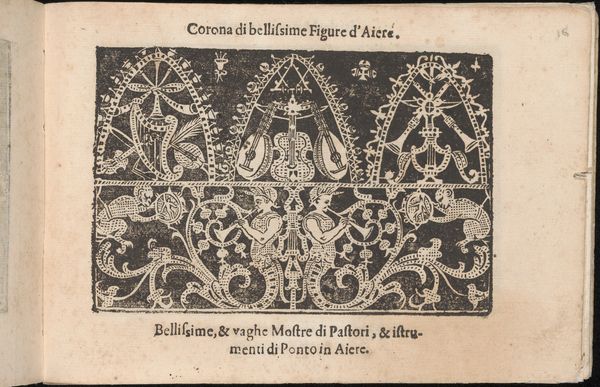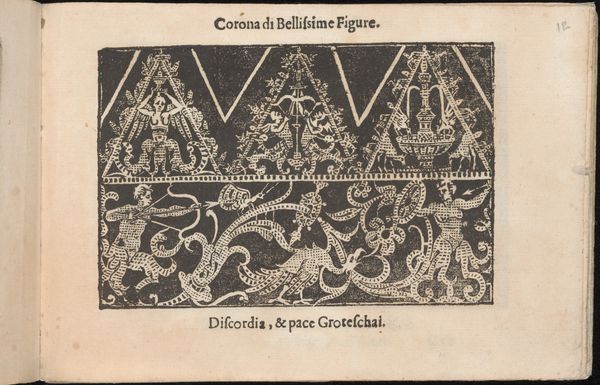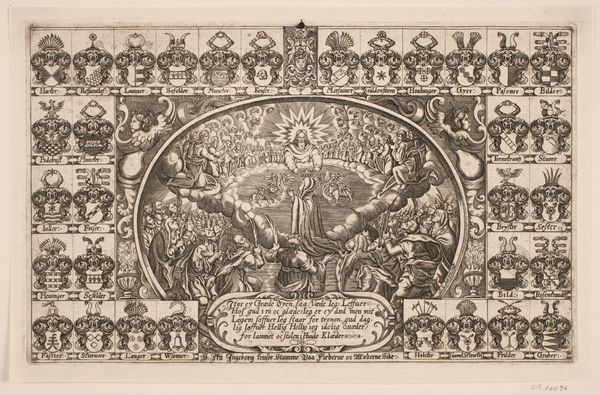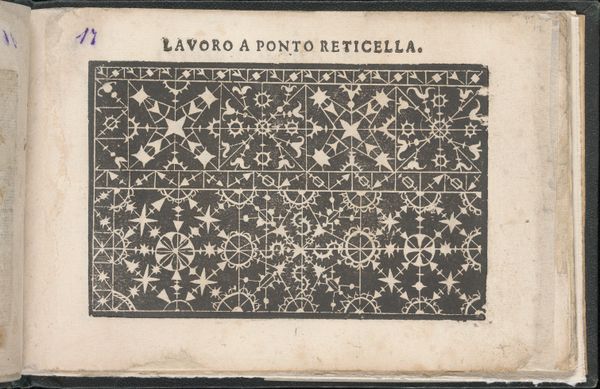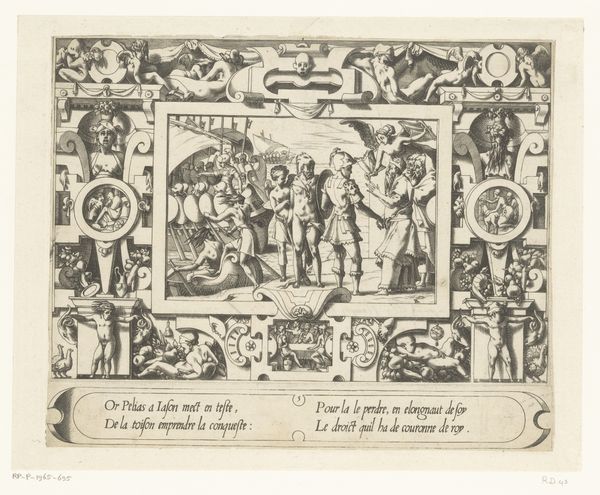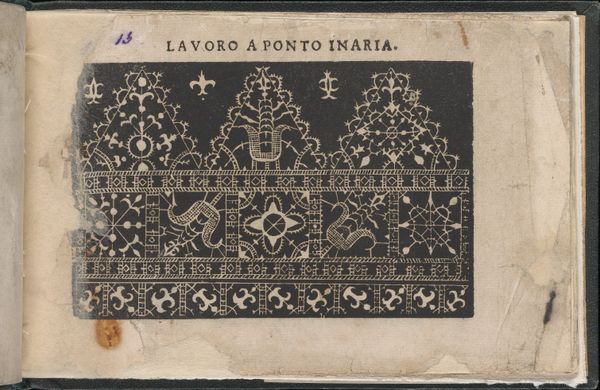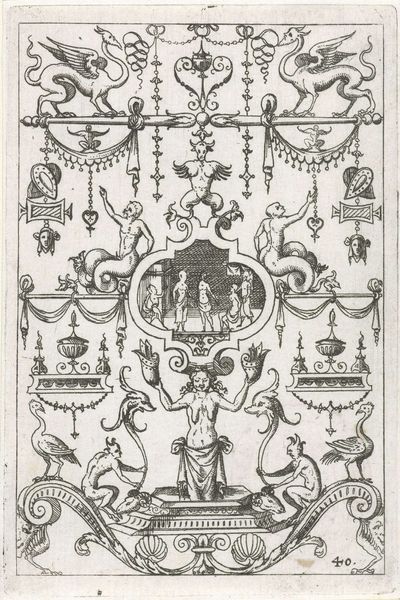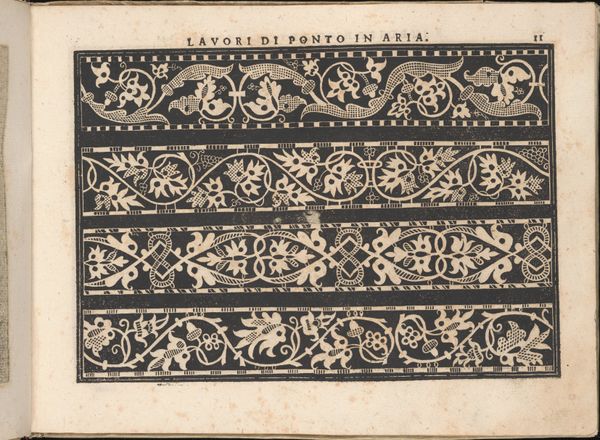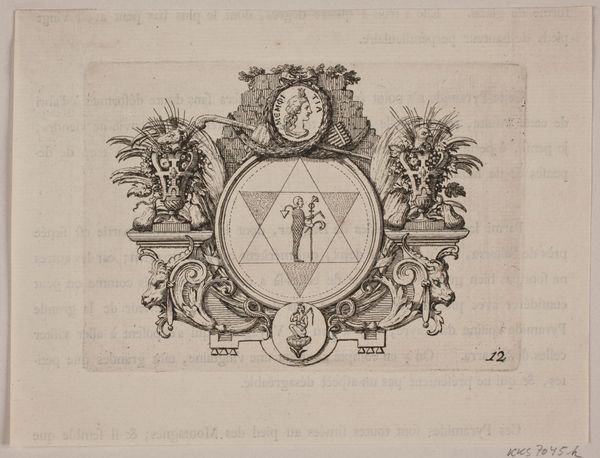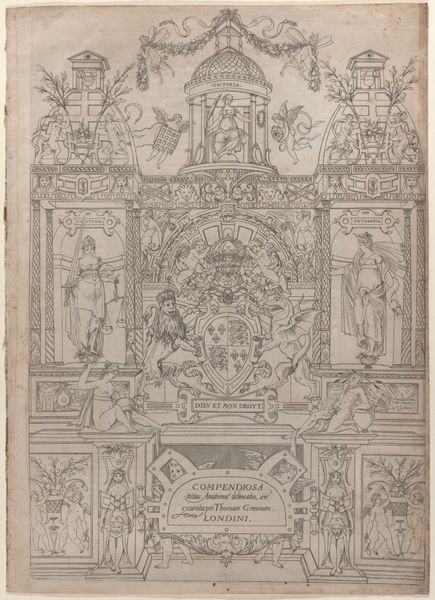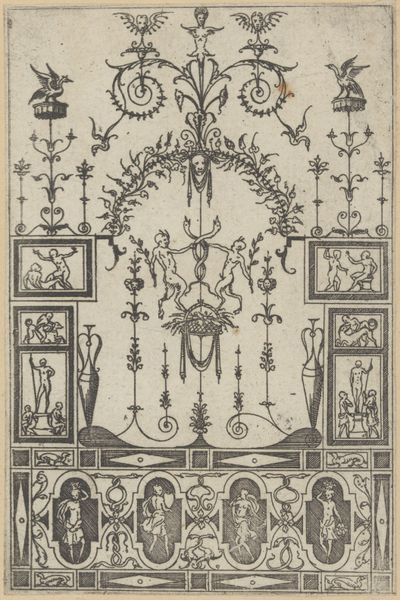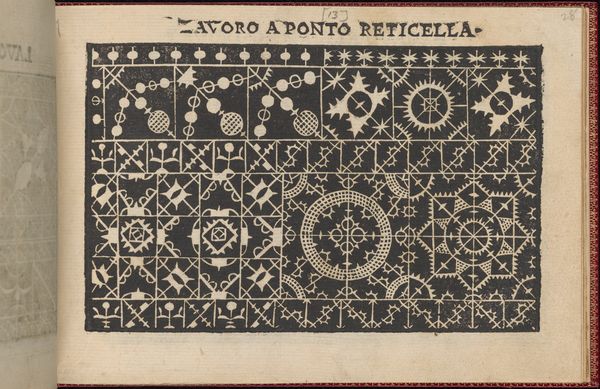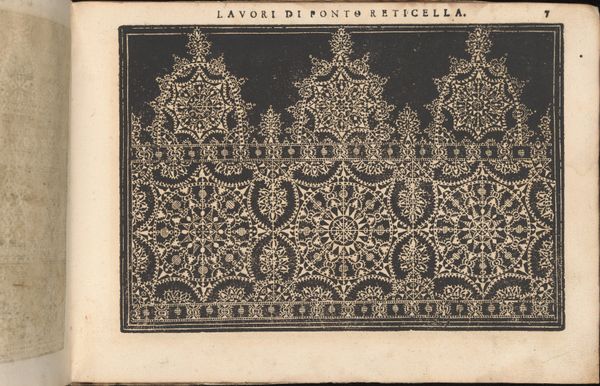
Corona delle Nobile et Virtuose Donne, Libro Terzo, page 17 (recto) 1620
drawing, graphic-art, print, ink, engraving
drawing
graphic-art
11_renaissance
ink
musical-instrument
italian-renaissance
engraving
Dimensions: Overall: 5 1/2 x 7 11/16 in. (14 x 19.5 cm)
Copyright: Public Domain
Curator: What a striking composition! The artwork we’re looking at is a page from Cesare Vecellio’s "Corona delle Nobile et Virtuose Donne, Libro Terzo," dating back to 1620. It's currently housed here at the Metropolitan Museum of Art. Made using ink, the print showcases intricate engraving. Editor: It has such an elegant and somewhat severe geometric structure; the monochromatic starkness contributes to a restrained aesthetic. What drew you to feature this particular piece? Curator: Beyond the aesthetics, this engraving speaks volumes about the lives of women in the Renaissance. Vecellio's book, which means "Crown of Noble and Virtuous Women", depicts their roles in society. This page focuses on music, indicating the importance of musical skill and instruments within elite circles. The production of prints like these, intended for a specific audience, involved skilled labor and was a commercial venture as much as artistic. Editor: I see how your Materialist perspective sheds light on production context, class, and labor; but considering just the forms, there's such interesting contrast between the hard-edged geometric frame of triangles and circles and the organic shapes of harps and lutes depicted inside. Curator: The contrast you highlight also echoes the broader societal constraints on women. Musical expression, while encouraged, remained within carefully prescribed boundaries. Think about access to musical instruments – who produced them, who had access to training? Editor: The choice to use engraving is really interesting. It presents such sharp contrast. And I’m curious to interpret how the symbolism informs this cultural snapshot. The overall triangular structure repeated across the piece almost resembles the prows of boats carrying these different instruments and modes. The page also describes this art as "Tutta la Musica insieme per passar tempo molte Damme, & Damigelle". What do you read in it? Curator: Right – music to pass the time of ladies and noblewomen. The page isn't just a celebration of music. It acknowledges the leisure afforded to certain women, leisure created by the labor of others. The engraving served a purpose, illustrating an expectation of noble womanhood. Editor: Ultimately, the formal presentation reveals the cultural realities. Vecellio’s piece provides us a moment of insightful contrast and intersection in the visualization of social roles. Curator: Agreed. There is always so much that we uncover when form is placed into its specific material and social situation!
Comments
No comments
Be the first to comment and join the conversation on the ultimate creative platform.
